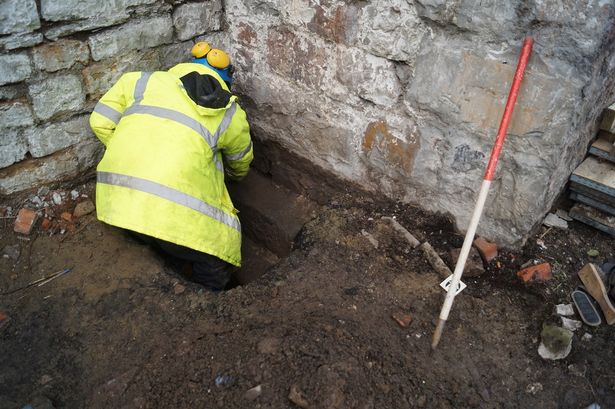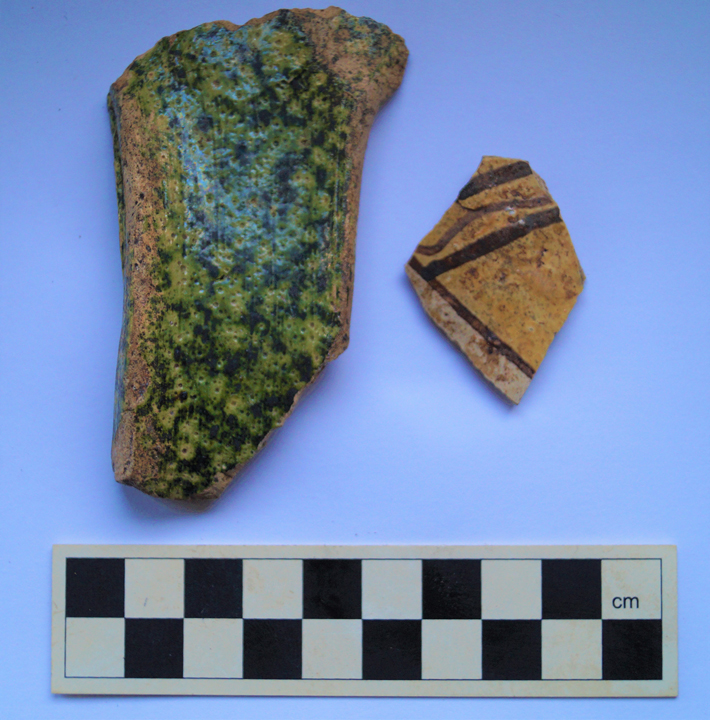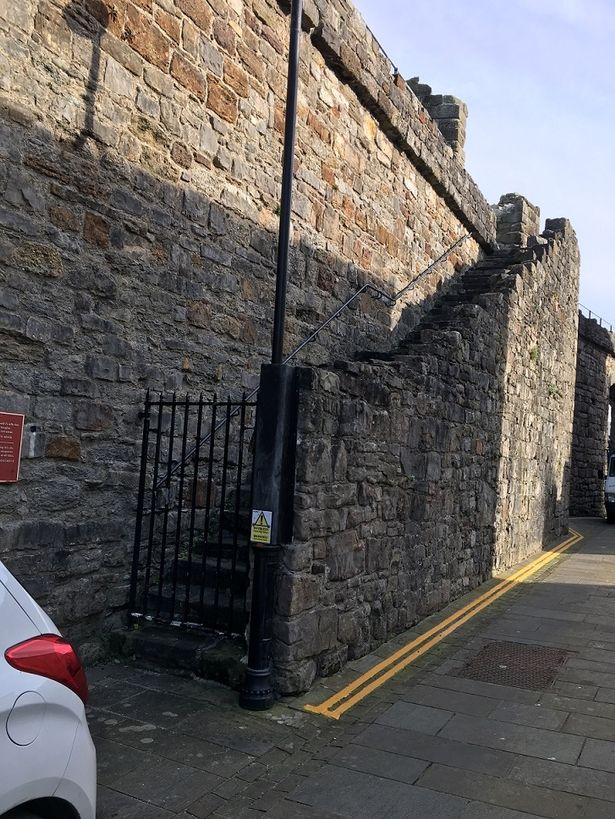Medieval Town Walls Uncovered in Wales
In a survey undertaken by Conwy Valley-based CR Archaeology, several other valuable items, which date back to the 13th century, were also found.
The discoveries made at Antur Waunfawr’s Porth yr Aur site have come as a result of building work taking place for their new Beics Antur project.
The yard was formerly owned by the local transportation company, Pritchard Bros, and it is adjacent to the medieval town walls, which are designated as a Scheduled Monument by CADW.

Built-in 1283 by King Edward I, the town walls surround Caernarfon Castle and were built to protect the new town borough. Porth yr Aur, or ‘Golden Gate’, was the main seaward entrance to the medieval borough and it was an integral component of Caernarfon Town Wall.
So far, discoveries at the site include a flight of steps, fragments of rare medieval pottery and what seems like a fireplace or doorway.

Matthew Jones, of CR Archaeology, said: “We have unearthed a green wine jug handle, which is Saintonge ware and is connected with the wine trade from Gascony, France. Their use is in Wales dates from 1280-1310 and is mainly associated with Edwardian towns and Castle sites.
“The steps are very exciting as they could represent the remains of the original town wall with was later built over in the 14th century when the gate had to be strengthened due to increased attacks by Welsh rebels in 1297, or after a fire in 1326.
“The doorway, or it may be a fireplace, is really interesting as it could represent an unknown entrance into the gatehouse. If it is a fireplace, it would also be very interesting as it could indicate what activities were going on at the site. We have maps that show buildings and some records of names of people who lived there but very little evidence of their day to day lives.”
The construction work continues on the site, owned by Antur Waunfawr, a local social enterprise that provides work and training opportunities for adults with learning disabilities.

The site will be developed into a Health and Well-being center for the local community, with a dedicated activity room available for hire on the first floor, accessible facilities, as well as a sensory room suitable for individuals with learning disabilities or sensory impairment.
The project has been supported by the European Regional Development Fund through the Welsh Government; the Architectural Heritage Fund; the Welsh Government’s Intermediate Care Fund; the Welsh Government’s Community Facilities Programme; and a pledge from the Garfield Weston Foundation.
Menna Jones, chief executive at Antur Waunfawr, said: “We are proud to have a presence in the town centre and aim to combine the ancient history of Caernarfon and its heritage with new activities and businesses, to promote the wellbeing and health of local people, individuals with learning disabilities and disadvantaged people.
We are working with CADW to plan how to display these historical items, and bring the history and heritage of the area to life for locals and visitors.”





